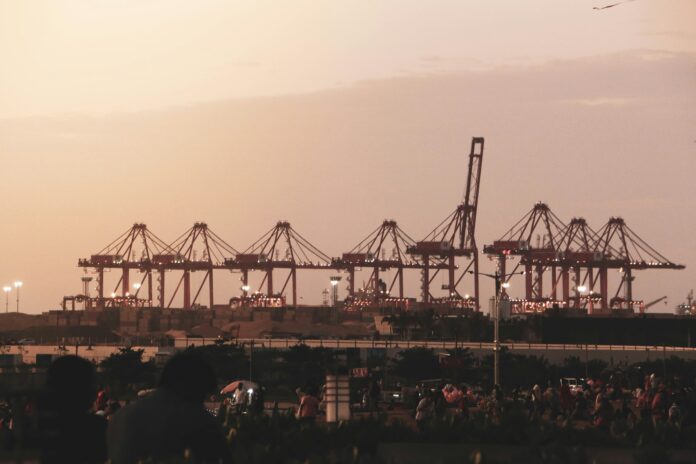
Moving a steel box looks simple until the conditions aren’t: wind picks up, a spreader needs a quick swap, the stack is tight, radio chatter spikes, and suddenly the margin for error narrows. Rigging is where those margins are either protected or wasted. This guide brings the yard view—pre-lift planning, gear selection, signaling, and post-lift checks—into one practical, plain-English playbook designed to help reduce incidents without slowing the operation.
Start with the plan: lift intent, path, and people
Every safe box lift starts before the first shackle is touched. Clarify the lift intent (why this move, what success looks like), the load path (where the container will travel and who crosses that path), and the people involved. Assign a single lift lead who owns the last “go/no-go” call; that small move eliminates the muddle of three half-decisions. Walk the route for slip, trip, and pinch hazards, check wind and visibility, and agree on a controlled stop point if conditions change. When the plan is simple enough to repeat back in one breath, you’re ready to rig. For planning around data-driven terminal ops, developments like the Port of Rotterdam bets on terminal and berth data piece show how better visibility tightens margins and reduces surprises.
Rigging basics that never go out of style
Containers aren’t mystery loads, but the attachments and conditions around them vary. Make sling and hardware choices based on rated capacity, angle, and protection from sharp edges. Keep slings untwisted and free of makeshift “fixes.” If the lift involves unconventional packaging or banded units, stick to rules that prevent over-reliance on straps or banding as the primary support. Those are evergreen fundamentals backed by guidance such as OSHA’s marine terminal slinging rules in 29 CFR 1917.13, which reinforce proper gear selection and use without prescribing every scenario.
Communication beats assumptions
Yards are noisy. Radios crackle. Lines of sight change as the spreader moves. Make a habit of confirming the channel, naming the lift, and rehearsing three things before the hook leaves the ground: the start signal, the emergency stop, and the hand-off phrase when responsibility shifts between crew. That small ritual takes seconds and saves minutes of sorting out crossed signals later. If visibility is marginal, station a spotter whose only job is line-of-fire and exclusion zone control—no multitasking. Attention to welfare and rest matters, too; initiatives like DP World opens new driver welfare facility at Southampton are part of the safety picture because tired crews miss cues.
Inspections you actually have time to do
You don’t need a forensic lab to catch most problems. Look for crushed or kinked sling legs, stretched links, distorted hooks, missing tags, and heat damage. Wipe grit from hardware that could mask cracks. Check that shackles are pinned and secured, not finger-tight. Treat any doubt as a stop—because a five-minute swap beats a five-day investigation. Keep inspection logs where crews actually work; a clipboard in a breakroom won’t help at the stack.
Training that sticks: make competence visible
Credentials aren’t a magic shield, but they do set a baseline for common language and safe practice. When you’re formalizing who can rig under a crane, reference a recognized load handling qualification to set expectations for sling selection, hitch types, angle awareness, and signal use. Build refreshers into the roster so competence doesn’t quietly expire between busy seasons, and pair new hands with an experienced rigger for the first dozen shifts so classroom ideas meet real-world wind and steel. For broader governance and SOP alignment, the IMO/ILO/UNECE CTU Code is a solid backdrop when you’re harmonizing yard rules with contractor policies.
Port yard safety meets modern equipment
Hardware has gotten smarter, but it still needs disciplined use. Load indicators are only as good as their setup and the attention paid to them. If your terminal is adopting autonomy or driver-assist tech for yard tractors, make sure the human–machine interface is part of the lift plan, not an afterthought. New systems reduce repetition fatigue and improve flow, yet they change how people position themselves around moving gear. Brief it, test it, then standardize it across shifts so the second crew isn’t improvising on a Friday night. Real-world examples like Port of Felixstowe doubles autonomous truck fleet underline how tech shifts workflows—and rigging routines should follow suit.
A practical workflow for box lifts under crane
Start with a clean pad and a committed exclusion zone. Confirm rigging matches the lift: correct sling type and length, correct shackles, correct spreader configuration. Bring the load under control before you bring it off the ground; that means slack taken evenly and tag lines where sway is likely. Lift slowly through the first few inches and pause—if something’s wrong, you want to discover it at shin height, not above the boom of the truck. Keep a steady pace along the planned path, and set down softly with room to derig safely. Close with a quick debrief: what slowed us down, what almost went sideways, what we’ll do different next time.
Documentation that helps, not hinders
Paper for paper’s sake kills momentum. Keep it to what matters: a short pre-lift checklist, a one-page sling and hardware inspection sheet, and a shift log of lessons learned. When you update an SOP, make the change visible at the point of use—laminated cards at rigging stations beat a PDF on a shared drive. If regulations or codes update, fold those changes into the checklist language, not just a policy memo. That’s how standards become habits.
When conditions shift mid-lift
Weather turns. A twist shows up as you clear the stack. The radio gets muddy. The best yard crews don’t power through; they call a controlled stop, reset, and resume. Build psychological safety around that behavior by praising the pause. Over time, you’ll see fewer “almosts” and faster recoveries because teams aren’t trying to rescue a bad situation on the fly.
Closing the loop with claims and learning
Every incident, near miss, or bent corner is a data point you paid for. Tag the root cause—communication, gear, environment, planning—and pick one corrective action you’ll actually adopt. Share the quick hits across shifts so knowledge doesn’t silo with the day crew. That small flywheel of learn–apply–share is how yards become predictably safe and, not coincidentally, faster.
Conclusion: safer rigging, smoother yards
Port yard safety for box lifts isn’t about heroics. It’s a rhythm: plan cleanly, rig correctly, communicate clearly, inspect what matters, and stop when needed. When those best practices show up in every shift, port yard safety ceases to be a compliance chore and becomes the quiet backbone of reliable throughput.





